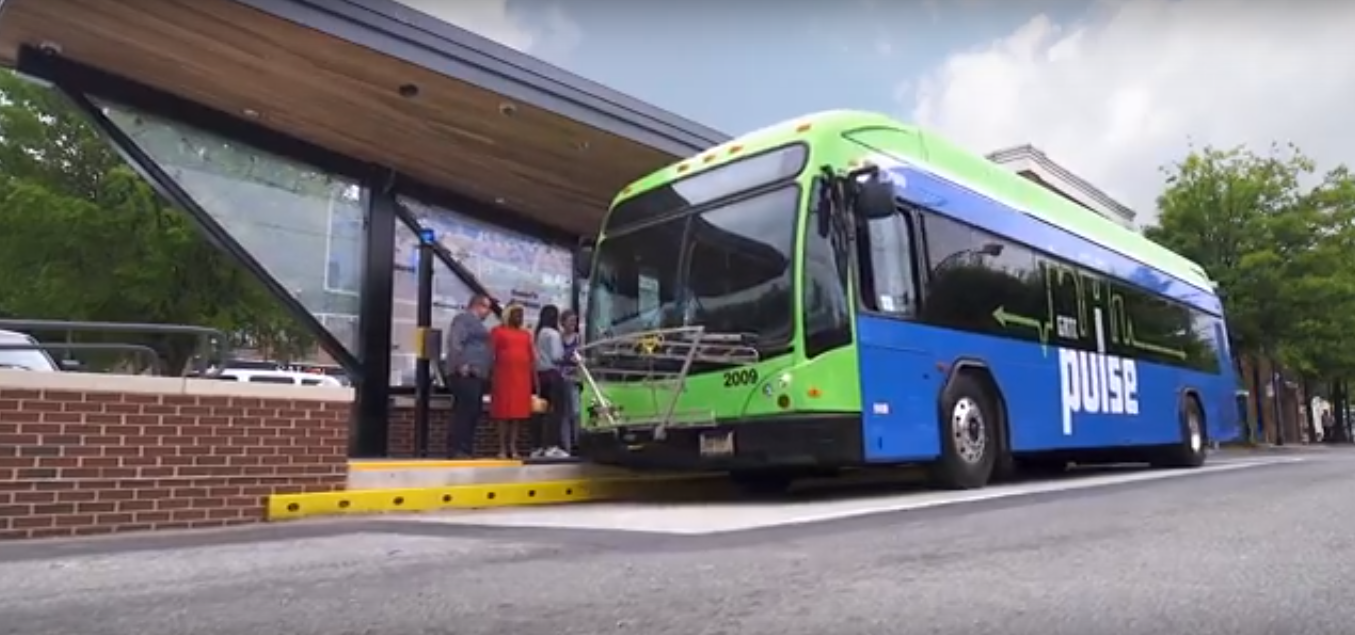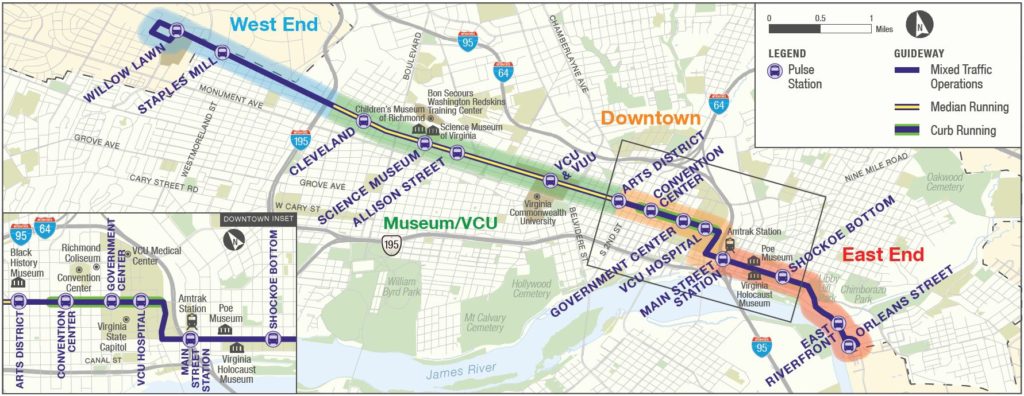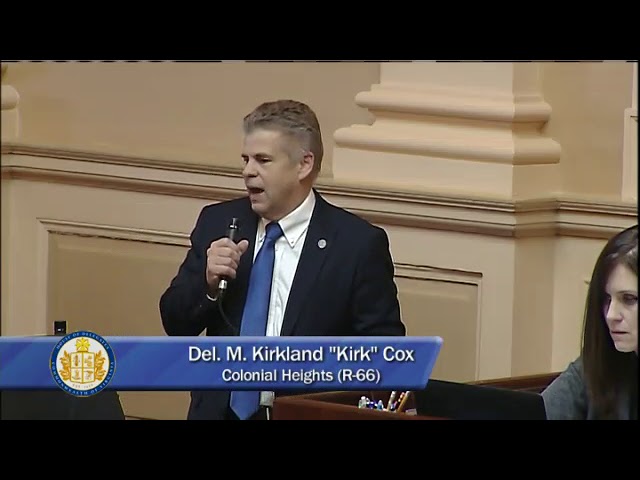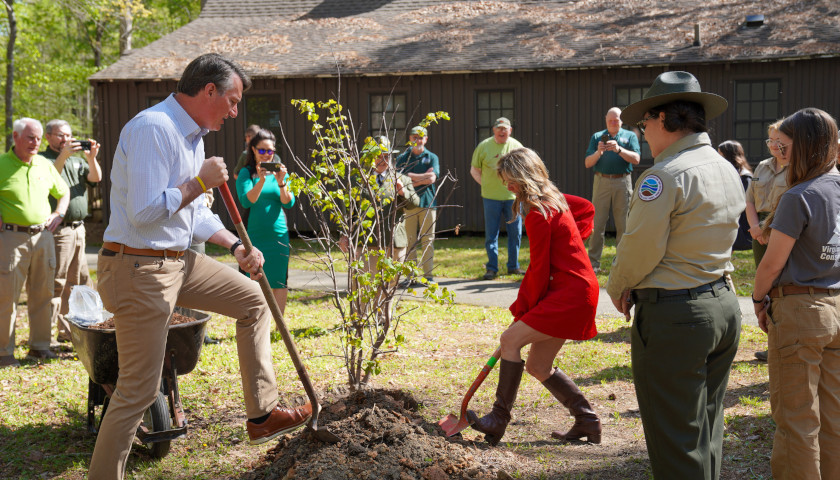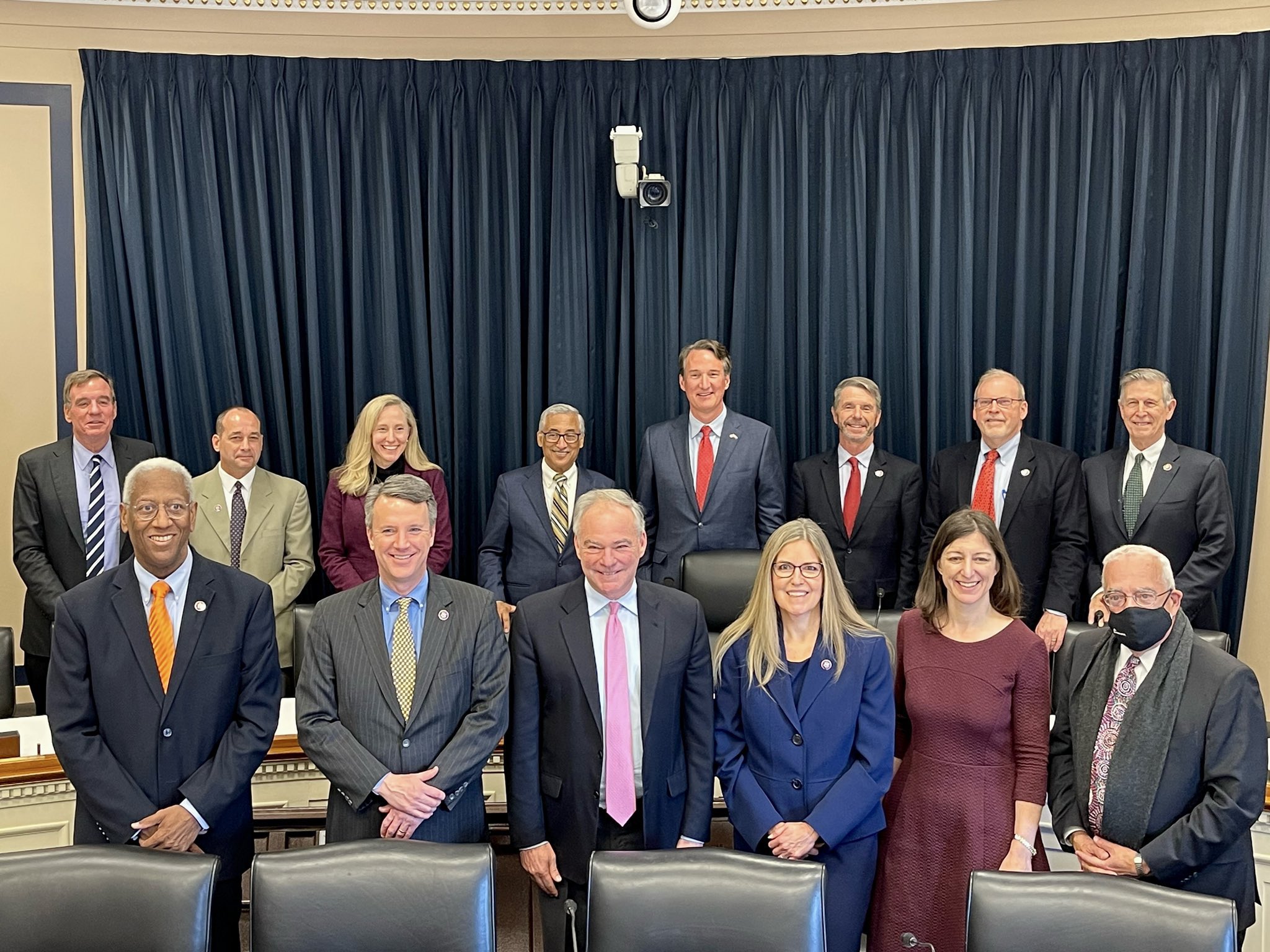At the beginning of July, the City of Richmond completed its biggest public transit overhaul in decades. The “Pulse” Bus Rapid Transit (BRT) system was seemingly an homage to the capital area’s electric streetcar system, inaugurated in May 1888 – a first among municipalities around the world. However, following the end of World War II, automobiles and bus-dominated mass transportation systems relegated the streetcar system to a romantic relic of the Victorian Era after the last ride was made in 1949 when the city uprooted the rails and burned the last of the cars.
With $64.9 million in funding from a conglomerate partnership with the U.S. Department of Transportation (DOT), the Commonwealth of Virginia, the Virginia Department of Rail and Public Transportation (DRPT), the Virginia Department of Transportation (VDOT), the City of Richmond, Henrico County, the Greater Richmond Transit Company (GRTC), and the Project Team, the 7.6-mile-long path from lower Rocketts Landing in the East and Henrico County’s Willow Lawn in the West provides 14 stops just blocks from numerous exciting destinations, businesses, services, and restaurants in Virginia’s capital city.
Some in the Richmond metropolitan area have applauded Pulse, saying that it allows them to park their car outside the city center when enjoying its amenities – considering issues with parking in Richmond are about as large as Dominion Energy’s real estate presence. Also, some like the fact that they can leave their houses in the Fan and Museum districts and do a bicycle tour of sorts of the breweries that are dotted along the main thoroughfares, then take the Pulse back to their area of town.
Though, some claim the system is but a farce, with areas that rely on public transit having service cut in favor of sending the train-like bus to the up-and-coming areas of Richmond, where people don’t necessarily need them to get around on a day-to-day basis.
NPR‘s Richmond station interviewed a few around the city to get their take on Pulse, finding the good and the bad with the system, just over one month since service began.
“This seemed really convenient,” said Michelle Flynn, who works in Richmond. “I can park my car near at Willow Lawn and be just dropped off right in front of my building. So it’s been great.”
GRTC reported that nearly 6,300 people took a ride on Pulse on opening day, June 24, according to the Richmond Free Press. Around 8,500 were ferried throughout the city on June 25, and nearly 8,000 on June 26. The numbers were fantastic, but the first week the system was operational, the rides were free, so many Richmonders and others were just checking out the massive transit overhaul as somewhat of an amusement ride.
With $1.50 rides, Pulse has averaged close to 5,400 riders on weekdays through the beginning of August, compared to GRTC’s goal of 3,500. Therefore, the city’s first rapid bus line has proven more popular than its planners expected, but some frequent bus riders feel left behind by the changes to the system at-large. GRTC overhauled the city’s bus routes using passenger data, with denser areas getting more frequent service, and other areas losing stops.
This has led to many criticizing Pulse as a gentrification scheme on wheels.
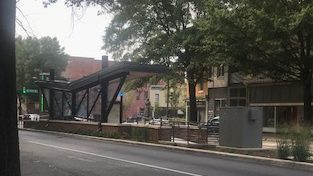 This is especially true for those in the Church Hill neighborhood. Instead of Pulse slipping straight down Broad Street and up into the historic neighborhood, it takes a turn right after passing the government buildings by VCU Medical Center and heads down into Shockoe Bottom, then onto the still-being-constructed Rocketts Landing, a luxurious waterfront neighborhood. This situation makes life much more complicated for those in lower-class housing that rely on public transit for everyday travel.
This is especially true for those in the Church Hill neighborhood. Instead of Pulse slipping straight down Broad Street and up into the historic neighborhood, it takes a turn right after passing the government buildings by VCU Medical Center and heads down into Shockoe Bottom, then onto the still-being-constructed Rocketts Landing, a luxurious waterfront neighborhood. This situation makes life much more complicated for those in lower-class housing that rely on public transit for everyday travel.
“I’m just going to have to get a car. That’s all to it. I mean, it leaves me no choice,” said Church Hill resident Calvin Jones, who works the night shift in Southside.
“The Pulse really takes nobody nowhere – just around in a circle.”
Richmond resident Debbie Roberts says Pulse is built not around being a mass transportation system, but a middle-class amenity. “I think all of this is about getting people and their bicycles up to Rocket’s Landing every weekend,” she said. “I genuinely do believe that.”
The bike and brewery types are certainly those that gain from Pulse. Nevertheless, let’s look at where exactly the bus line goes.
As has been said, Rockett’s Landing, the bus line’s easternmost drop off point, has been in the works for at least five years, where there are hundreds upon hundreds of luxury condos and apartments for sale. According to listings on Zillow, they range in price from the upper $400,000s to well over $1.3 million. Teamed with areas to store boats, a couple of high-end restaurants and clubs, volleyball courts, and other accouterments, the people living there (well, soon-to-be living there) seem like they are not in dire need of a bus to take them away from their little slice of paradise aside the riverfront.
On the western end of Pulse there Willow Lawn, the growing shopping center that has been adding wine bars, a Dick’s Sporting Goods, and other upper-tier stores as it seeks to draw in better clientele. This is slowly becoming the place to shop as stores at Stony Point Fashion Park are closing, and the traffic near the Short Pump mall is just too egregious to even deal with. So, the Pulse is not really a mass transit system, but a ferry system for shoppers. No, not those just going out to get groceries, but those paying the price for higher-end items.
Obviously, no one who lives paycheck-to-paycheck is going to ride the BRT system to grocery shop at the Whole Foods they are putting in on Broad Street. Interestingly, it is located just down the street from Kroger, where everyone shops, where there is no Pulse station.
Another Church Hill resident, Reverend Ben Campbell, a GRTC board member who is also an area historian, puts a little more light into this subject. He said, “Public transportation was the free choice of suburban counties and they chose to maintain racial segregation in employment and in social mixing by stopping public transportation from crossing the city line.”
For those who do not have access to personal transportation, taking the bus is the only way to get to work, or the grocery store, or anywhere else outside of a mile or two away. But, for Campbell’s assessment, take it from neighboring Chesterfield County, which doesn’t allow GRTC buses to cross the county line. The Pulse has only a certain selection of a target market.
Statistically, it is a trend that is about as old as I-95 running through the northside of the city. The Richmond area was ranked 92nd out of 100 in a 2011 Brookings Institute study on access to public transit and employment.
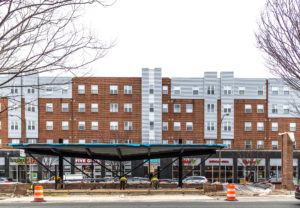 GRTC CEO David Green, who just resigned his post, said that Pulse was one way to fix that – especially for Millennials.
GRTC CEO David Green, who just resigned his post, said that Pulse was one way to fix that – especially for Millennials.
“RVA needed a service like bus rapid transit in order to attract and retain these younger people to help with workforce development, to help with tourism,” Green said. He also relayed that service to Short Pump may be in the works soon. If so, when it comes to workforce development, Millennials should not be the target crowd for the Pulse.
Ross Catrow, an advocate and organizer for RVA Rapid Transit, a grassroots organization dedicated to educating, organizing, and advocating for regional public transit across metro Richmond, says: “So, if you live in eastern Henrico now or the southern part of Richmond City, there are tons of jobs in Short Pump that are inaccessible to you. You might be qualified, you might want to work out there, but if you don’t have a car, you can’t get to them, so they’re off your radar, right?”
Millennials do not live in eastern Henrico or in the depths of Southside Richmond; they live in the Fan and Museum districts, Scott’s Addition, Shockoe Bottom, the VCU area – all the places where the Pulse is.
With Pulse taking from the lower class and giving to upper middle class in terms of transportation options, it does seem like mobile gentrification.
When it comes to Bus Rapid Transit, as they do put emphasis on “rapid,” the project leaders say that the line, which features a somewhat-dedicated bus lane throughout the route, will “attract new riders by providing a service with travel times that are competitive with motor vehicles or passenger vehicles…increase bus speeds by approximately 65%,” and, “improve pedestrian safety at station areas with improved crosswalks and pedestrian refuge areas at station platforms.”
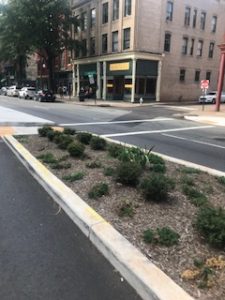 As for pedestrian safety, beforehand, passengers boarded the GRTC buses from the sidewalk, because that is how most other major cities do it because it is the safest. However, Pulse uses a few middle-of-the-road stations, which are placed there due to traffic patterns and other reasons. Now, Washington, D.C.’s metro line has stairs and skyways that allow passengers to cross the busy roads without having to dodge traffic, but to board the bus in Richmond, one must step into traffic.
As for pedestrian safety, beforehand, passengers boarded the GRTC buses from the sidewalk, because that is how most other major cities do it because it is the safest. However, Pulse uses a few middle-of-the-road stations, which are placed there due to traffic patterns and other reasons. Now, Washington, D.C.’s metro line has stairs and skyways that allow passengers to cross the busy roads without having to dodge traffic, but to board the bus in Richmond, one must step into traffic.
Pulse claims that dedicated walkways (which are painted lines on the asphalt) let drivers know that passengers are to be crossing. Considering a handful of drivers crashed into the middle-of-the-road stations in the first week of service, one could say that it is less than 100 percent safe. Nevertheless, painted lines are the only thing keeping vehicles from running someone over.
GRTC claimed that projected line travel time between the two east and west points is 29 to 31 Minutes, according to Ride GRTC. A research analyst from TRS rode the lines twice, once on June 30 and on July 4. The ride on Independence Day from Rockett’s Landing to the Science Museum, which covers a little over 60 percent of the length of the line, took 44 minutes, and the ride the weekend before on the same route took 38 minutes.
Pulse buses must stop at all 14 stations, even when no passengers are present, but also must stop at all traffic lights. Normal automobiles do not have to do this. Without doing the exact math, the ride is a tad longer than what they said. When we say tad, we mean a lot, actually.
Factually, one can get across the city faster on a bicycle. So, it is not competitive with personal vehicles – unless they factored in the time it takes to find a parking spot. If so, a pogo stick would be a faster ride through the city than actually driving.
This is where the “rapid” aspect of the Bus Rapid Transit system is confusing. Is BRT faster than normal GRTC buses? Yes, they are, due to the bus lanes and not having to attempt to re-enter normal traffic patterns after picking up passengers at the side of the road. However, Pulse was not modeled after capturing normal GRTC riders. It is for tourists, the bike and brewery crowd, people who cannot find parking within the city, and yes, some normal GRTC riders that have lost service because of Pulse.
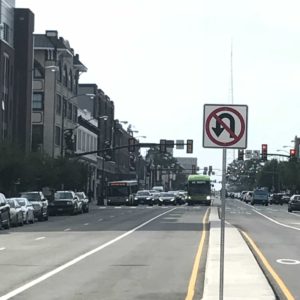 As for the bus lanes, they were said to be constructed so that buses would have a dedicated lane on Broad Street to reduce traffic congestion. Well, they do; the Pulse buses do, but not GRTC buses. Normal buses still travel up and down Broad Street, so now the main thoroughfare through Richmond has one less lane and twice as many buses on it.
As for the bus lanes, they were said to be constructed so that buses would have a dedicated lane on Broad Street to reduce traffic congestion. Well, they do; the Pulse buses do, but not GRTC buses. Normal buses still travel up and down Broad Street, so now the main thoroughfare through Richmond has one less lane and twice as many buses on it.
BRT has a branding problem. It would not have been that shocking to people if they at least told the public that the poor folks would lose service, the richer folks would have a shopping trolley, Broad Street would become a mess, businesses near the lines may have to close up shop due to construction, security guards on the buses would just sit and listen to music while rowdy kids cussed their way to their destinations, no one is checking tickets, and that it all cost way more than it should have.
To be truthful, instead of being branded as BRT, it should have been called “At Least You Don’t Have To Park,” or “Faster Than Walking,” or even “Wheels To Forward Richmond’s Vanity Acts,” or WTFRVA for short.

